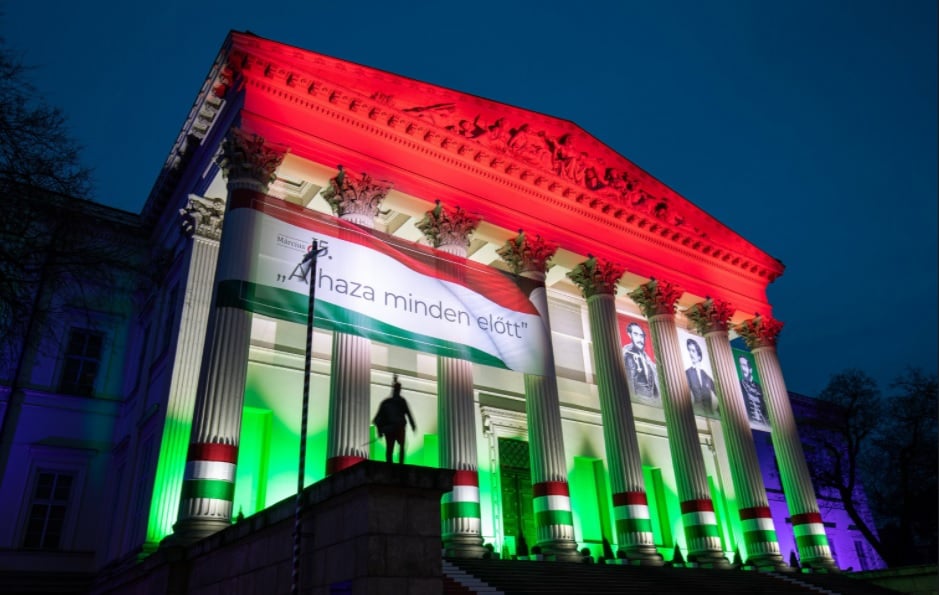
The country marks the anniversary with a commemorative year full of various cultural programs.Continue reading

A wide range of activities are planned across the country for March 15, the day commemorating the 1848-49 Revolution. This year, Prime Minister Viktor Orbán will give his speech at the birthplace of the country’s national poet, Sándor Petőfi, in Kiskőrös.
“On your feet now, Hungarians! Let us celebrate together on 15 March in Kiskőrös, at the birthplace of Sándor Petőfi,” Viktor Orbán announced on his Facebook page last week. The prime minister has recently been celebrating Hungarian national holidays in rural towns, most recently in Zalaegerszeg on October 23, where he gave a speech to mark the anniversary of the 1956 revolution.
This year’s celebration is also significant, because it is the 200th anniversary of the birth of Hungary’s national poet, Sándor Petőfi, and this year has been declared the Petőfi 200 commemorative year, with a number of related programs. Sándor Petőfi was an iconic figure of the 1848-49 Revolution, he wrote one of his most famous poems on this occasion called National Song (Nemzeti dal) that rallied the Hungarian youth behind the revolution of independence. He also participated in the armed conflict of the revolution, and according to the current opinion of historians, he died on July 31, 1849 following the Battle of Segesvár. However, the full circumstances of his disappearance are still unclear.
from “National Song” (“Nemzeti dal”), translation by George Szirtes.
In Buda Castle, for example, there are several venues offering thematic programs related to Petőfi and the 1848-49 Revolution, with a special focus on children. Moreover, there are also a wide range of activities in the capital and in the countryside, organized by the operational team responsible for the March 15th national holiday.
The official program for March 15 includes the ceremonial raising of the flag of Hungary at 9 am on Kossuth Square in front of the parliament building, followed by a festive procession of hussars to the National Museum. A ceremony is to be held in the Museum Garden from 10:30 am, and Orbán will gives a speech in front of the Petőfi Birthplace and Memorial Museum at 3 pm.
The Hungarian nation wanted independence as part of the Habsburg Empire, and their demands for reform were formulated in 12 points. The list was entitled: “What the Hungarian nation desires. Let there be peace, freedom, and equality.” Among other things, they demanded freedom of the press, a national army, and an annual parliamentary session in Budapest.
The parliament is open to the public from 10 a.m. to 6 p.m. on the occasion of the national holiday, and several prestigious museums offer free admission today, including the National Museum, the House of Terror, and the Museum of Fine Arts, among others.
The National Heritage Institute organizes a walk in the Fiumei Road Graveyard on March 15 from 14:00 under the title “Remembering 1848-49.” The Fiumei Road Graveyard, opened in 1849 as a public cemetery in Pest, is the only cemetery that is a national memorial site in its entirety, an open-air history book of modern Hungary, where visitors can also find “traces” of the 1848-49 Revolution, among other things, the organizers said in a statement.
Furthermore, the Hungarian national holiday is not only celebrated in Hungary. Last Saturday, Hungarians in the Czech Republic commemorated the 175th anniversary of the outbreak of the 1848-49 Revolution by placing wreaths on Hungarian memorials and celebrating the occasion. The central celebration, organized by the Association of Hungarians in Czech Republic, together with several other organizations, took place in Prague on Saturday morning.
The Rákóczi Association, promoting Hungarian culture and language in the Carpathian Basin, is also celebrating in a unique way, with around 6,500 students from 147 secondary schools in the Carpathian Basin traveling to another school, crossing at least one border, to celebrate and commemorate the March 15th national holiday together in the framework of the Rákóczi Association’s Student Travel Program. Since 1994, the aim of the program has been to bring together Hungarian secondary school students from the Carpathian Basin countries to commemorate the 1848-49 Revolution, and to create as many experiences, memories, and personal contacts as possible between students and teachers. The trips are scheduled to take place between March 6-21 .
One can also find festive activities in the online space. On the National Film Institute’s streaming platform, Filmio, a thematic compilation of restored film classics pay tribute to Petőfi in connection with the national holiday and the Petőfi 200th commemorative year.
Judit Elek’s 1984 film Mária-nap (Mary’s Day), in which members of the Szendrey family (Júlia Szendrey was Sándor Petőfi’s wife) are forced to confront their repressed emotions at a family gathering almost 20 years after the revolution, is shown online for the first time on the national holiday. Moreover, on March 16, the monumental, restored film adaptation of the 1848 Revolution, The Sea Rises, will debut, presenting the events from the perspective of iconic figures such as Petőfi, József Bem, and the Hungarian youths of March, in a 1950s-style adaptation in line with the socialist ideology of the time.
Featured photo via Facebook/Magyar Nemzeti Múzeum